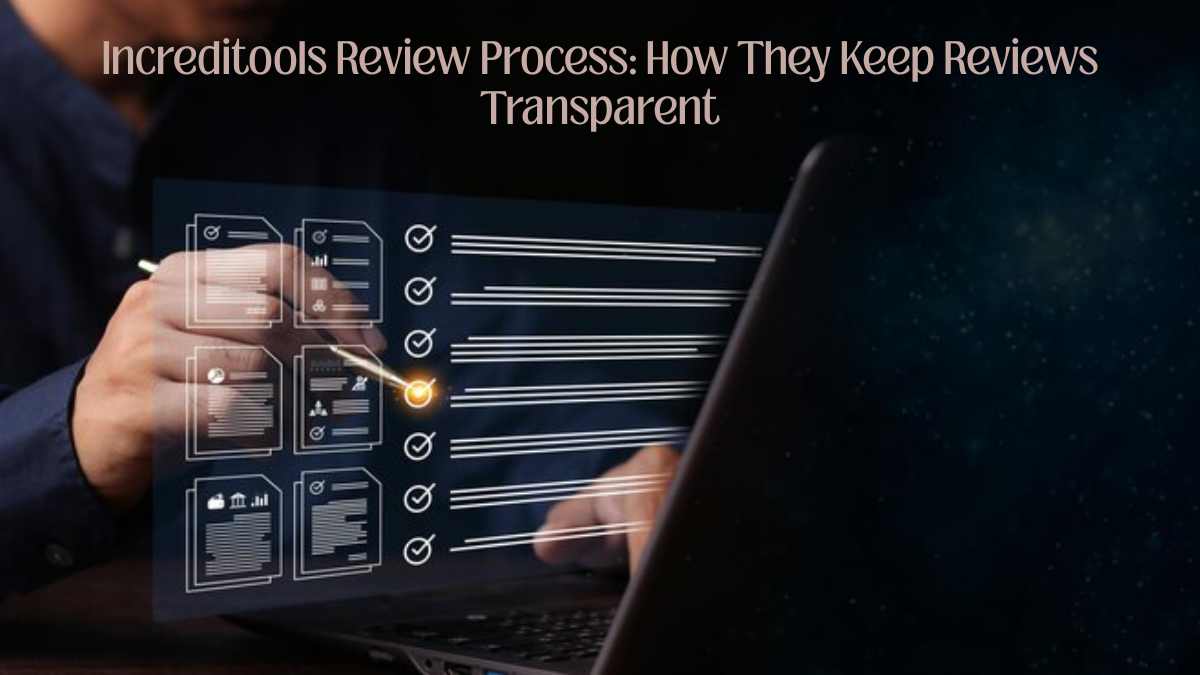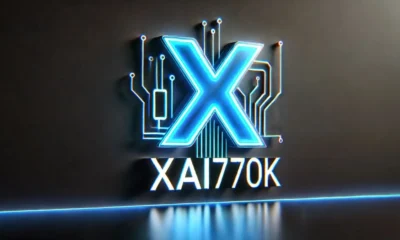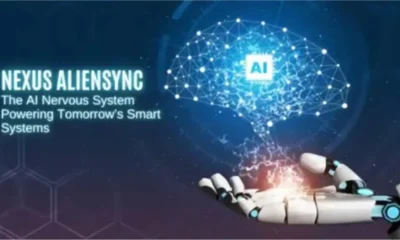TECHNOLOGY
Increditools Review Process: How They Keep Reviews Transparent

Increditools is a comprehensive online platform that specializes in offering detailed technology-related resources. Established in 2017 and headquartered in San Francisco, Increditools has become a go-to source for consumers seeking reliable information on the latest digital tools and software. The website is designed to help users make informed purchasing decisions by providing unbiased reviews, side-by-side comparisons, and promotional codes for a wide range of digital services. Whether you’re a small business owner, a digital marketer, or an everyday consumer, Increditools is committed to ensuring that your technology investments are both effective and worthwhile. Its mission revolves around simplifying the tech discovery process and enabling users to navigate the digital world with confidence and clarity.
History and Background
The company Increditools launched in 2017 through the efforts of tech-emerged professionals who saw a rising demand for reliable product reviews in the digital domain. This small beginnings blog grew rapidly to become a complete platform focused on analyzing software technology alongside recommendation services. The company achieved its growth by dedicating itself to providing unbiased reviews of detailed information that always focuses on user needs. Thousands of users benefit from the hundreds of tool reviews conducted by this organization during its operation. As a San Francisco-based team, the organization evolves with digital trends and new tool categories to preserve its position as a trusted digital information source.
Core Services Offered
The platform delivers multiple service options tailored for people who study technology, as well as business founders and regular consumer groups. The main service delivered by Increditools consists of a thorough analysis that covers marketing software, security applications, and other digital tools. Users can make efficient product evaluations through the platform’s feature that offers complete comparisons between competitive options. The platform contains a carefully selected list of promotional codes that enable users to access specific discounts from well-known tool subscriptions. The platform provides educational materials like guides and tutorials to teach users the proper methods for integrating tools into their workflows.

Types of Software Reviewed
It presents tools across numerous software fields to serve users from different background groups. Social media growth tools are one primary emphasis at Increditools because they assist users in expanding their platforms on Instagram, TikTok, and YouTube. The platform evaluates VPNs and cybersecurity applications to provide users with necessary information about data protection and online privacy. The platform dedicates exceptional focus to marketing and SEO tools since they are fundamental elements for business expansion and digital recognizability. User productivity improves alongside efficiency through the platform’s review of automation software tools.
Review Methodology and Transparency
The core value involves conducting objective assessments and transparent evaluations. Increditools evaluates digital solutions by applying multiple assessment criteria ranging from functional performance to operational simplicity, pricing structure, customer assistance, and end-user appreciation metrics. The team members conduct practical examinations of software when possible, but enhance their examination by researching and confirming end-user feedback. As a fundamental value point, Increditools reveals its affiliate partnerships to enable users to identify product reviews that include monetary compensation. The platform’s honest policy demonstrates professionalism and integrity in an industry corrupted by biased sponsorship content. Users become more confident in the choices they make because of this transparency.
Popular Categories on Increditools
Increditools maintains various popular categories that attract a large number of users. The review section of Instagram growth services receives the highest number of visitors because it shows users how to grow their audience and engagement on Instagram legitimately. The automation tools available on LinkedIn serve the needs of professionals who wish to develop their networks and source potential leads. The YouTube and TikTok tool offerings on Increditools serve content developers who want to enhance their audience reach and interaction levels. The platform investigates general business software and marketing platforms to provide users with knowledge about tools that enhance operational efficiency alongside customer interaction. The classification systems represent modern digital patterns and fulfill the requirements of technology-oriented consumer behavior today.
Increditools Promo Codes
The main strength of Increditools consists of its active maintenance of its ever-evolving promotional code collection. It offers special discount access to users through its promo codes, which cover multiple digital products and subscription services. Increditools partners with software companies and service providers to gain deals that the general market cannot access. The increased value of Increditools benefits all kinds of small enterprises and individual freelancers who need to keep costs low. Users can explore different categories and perform specific searches to locate updated promotional offers for various tools. Each promo code on the platform goes through verification testing for operational accuracy.
SEO Strategy and Online Visibility
It employs a strong SEO strategy that ensures its content ranks highly on search engines. By targeting high-volume, low-competition keywords related to software tools, digital marketing, and social media growth, the platform drives significant organic traffic. Each article is optimized for search intent, featuring relevant keywords, meta descriptions, and internal linking. Regular updates keep the content fresh and aligned with current trends. This SEO approach not only increases visibility but also positions it as a thought leader in the tech review space. It leverages search engine algorithms effectively to reach users actively looking for digital solutions and software advice.
How to Contact Increditools
Users can reach Increditools through several channels, which include their website-based contact form. Calls for business partnerships and collaboration requests should be sent to the designated email mentioned in the “Contact Us” section. Users can use Twitter and LinkedIn to reach Increditools through social media, where they can engage with the platform by asking questions or following recent updates. When users contact Increditools for support, their inquiries are managed through quick, dedicated responses that either resolve their problems or provide helpful answers to their questions. The platform employs a comprehensive communication method that makes its services available through multiple channels while building strong bonds between the company and its user group.

Future of Increditools
Increditools stands ready to expand its operations by implementing innovations across its business landscape. Increditools intends to add AI tools, Web3 applications, and blockchain services to its existing software categories. It seeks to improve user engagement by establishing forums and enabling users to submit reviews and create personal comparison tools. It will enhance its SEO approach to capture more users while maintaining its dedication to transparency in the quality of its offerings. The development of a mobile app platform is currently under consideration for improved platform accessibility to users.
-

 BIOGRAPHY7 months ago
BIOGRAPHY7 months agoBehind the Scenes with Sandra Orlow: An Exclusive Interview
-

 HOME1 year ago
HOME1 year agoDiscovering Insights: A Deep Dive into the //vital-mag.net blog
-

 HOME1 year ago
HOME1 year agoSifangds in Action: Real-Life Applications and Success Stories
-

 BIOGRAPHY1 year ago
BIOGRAPHY1 year agoThe Woman Behind the Comedian: Meet Andrew Santino Wife




























